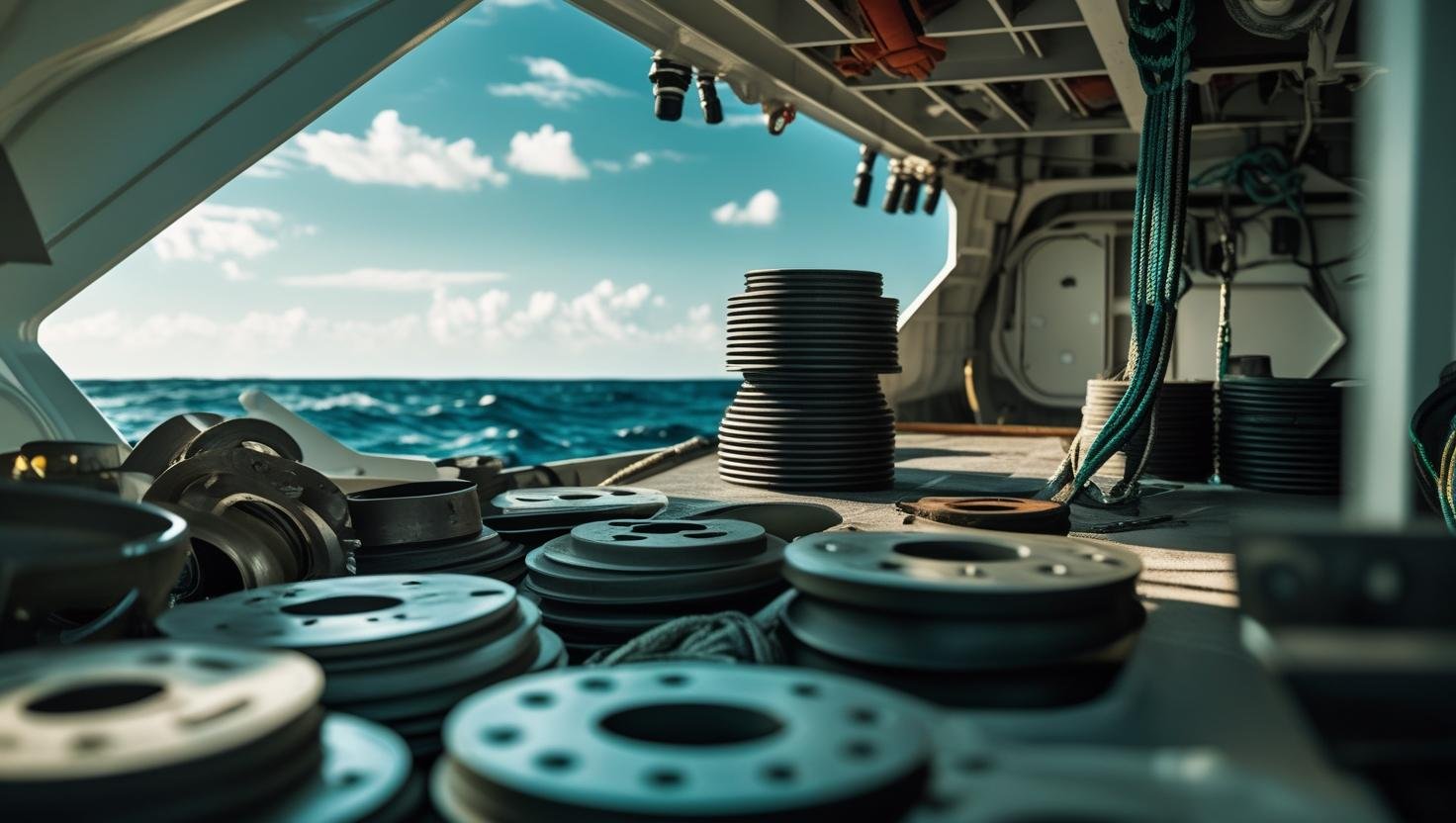Why Reusing Marine Spare Parts Makes Business and Environmental Sense

Let’s be honest—owning or managing a vessel in India isn’t cheap. Between fuel, crew, port fees, and maintenance, the running costs can be a real headache. Now add to that the rising prices of marine equipment, and it becomes clear why many vessel owners are looking at reused marine parts as a smarter solution.
But is it a good idea to reuse marine spare parts? Is it safe? What about the quality?
You’re not alone if these questions have popped into your mind. The good news is that marine recycling, when done the right way, doesn’t just save money—it’s also great for the environment and works just as reliably as new.
Let’s explore how reusing marine parts is not only smart for your wallet but also for the planet.
What Are Reused Marine Spare Parts?
Reused marine parts are components salvaged from decommissioned ships, mostly from ship-breaking yards like Alang in Gujarat, which is one of the world’s largest ship recycling hubs. These parts are removed, cleaned, tested, and refurbished (if needed), then sold by trusted marine spare parts suppliers.
Some common reused spares include:
- Fire alarm panels
- Navigation equipment
- Radar processors
- Control systems
- Dynamic Positioning (DP) units
- Engine room displays and sensors
These parts come from well-maintained foreign ships that are retired, not damaged ones. Most of the equipment still has years of life left in it.
The Business Side: Why It Makes Financial Sense
1. You Save Big – Like, Really Big
On average, reused marine parts cost 50–70% less than brand-new ones.
For example, a new DP system could cost ₹8–12 lakhs, while a fully tested reused one may cost around ₹3–4 lakhs.
In India, where cost-efficiency is the name of the game—especially for small vessel operators and coastal shipping companies—this saving can be a game changer.
2. Quick Availability
When you order a new part from an international OEM, you wait for weeks.
But with reused parts already in stock, suppliers like Ship Automation can dispatch the item within 24–48 hours across Indian ports—Mumbai, Cochin, Chennai, Visakhapatnam—you name it.
3. Better Return on Investment (ROI)
Older vessels, especially second-hand ships, may not be compatible with the latest OEM parts. Investing in compatible, working reused parts ensures smooth operations without needing costly upgrades.
The Environmental Impact: Why It’s Good for the Planet
1. Less Electronic and Metal Waste
Do you know how much waste a single ship produces when scrapped? According to the Ship Recycling Industries Association of India (SRIAI), over 95% of a ship can be reused or recycled.
By choosing reused marine parts, you’re directly reducing:
- Electronic waste (e-waste)
- Hazardous material dumping
- Carbon emissions from new manufacturing
2. Supports India’s Circular Economy
India is pushing for more sustainable and circular industrial practices. By embracing marine recycling, we’re reusing existing materials instead of demanding new ones. This reduces pressure on raw resources and lowers environmental impact.
3. Cuts Down on Manufacturing Emissions
Manufacturing new marine electronics and automation units emits large amounts of CO₂. By reusing what already exists, we avoid contributing to that unnecessary carbon footprint.
Are Reused Parts Really Reliable?
That depends on where you’re buying them from.
Reused parts from unverified sellers or local scrap markets may come with risks. But if you buy from trusted marine spare parts suppliers like Ship Automation, you can expect:
- Full functional testing
- Physical inspection
- Refurbishment (if needed)
- Test reports with photos/videos
- Even a limited warranty on some parts
Many Indian vessels, from fishing trawlers to offshore support ships, are already using reused parts, and they’ve been running fine for years.
Common Myths About Reused Marine Parts—Busted!
Myth 1: “They don’t last long.”
Truth: Most reused parts come from ships that have been running in international waters with strict maintenance schedules.
Myth 2: “There’s no warranty.”
Truth: Trusted suppliers offer a 3–6 month warranty and full testing documentation.
Myth 3: “Only small vessels use them.”
Truth: Even offshore rigs, government ferries, and deep-sea vessels use refurbished systems due to their compatibility and reliability.
When Should You Go for Reused Over New?
Go for reused marine parts when:
- Your vessel is older and doesn’t need high-end upgrades
- You need urgent part replacement
- The OEM has discontinued the part
- You’re working within a budget
How to Choose the Right Marine Spare Parts Supplier
Before buying any reused marine parts in India, make sure to check:
- Do they test the equipment before dispatch?
- Can they provide technical support?
- Are spare parts packed safely?
- Do they share product photos or videos?
Ship Automation is one such supplier that ticks all these boxes, with over 10,000+ tested marine parts in stock and quick delivery across India.
Conclusion
Reusing marine spare parts is no longer a “cheap shortcut”—it’s a smart, sustainable, and strategic decision for today’s marine industry. You save lakhs, reduce downtime, and support a cleaner planet—all without compromising on performance.
So the next time a control panel fails or your radar needs replacement, think beyond “brand new.” Check with reliable marine spare parts suppliers like Ship Automation, who specialise in reused marine parts that are tested, documented, and trusted.
Need a specific marine spare part now? Contact Ship Automation and get real-time availability, pricing, and expert advice.
